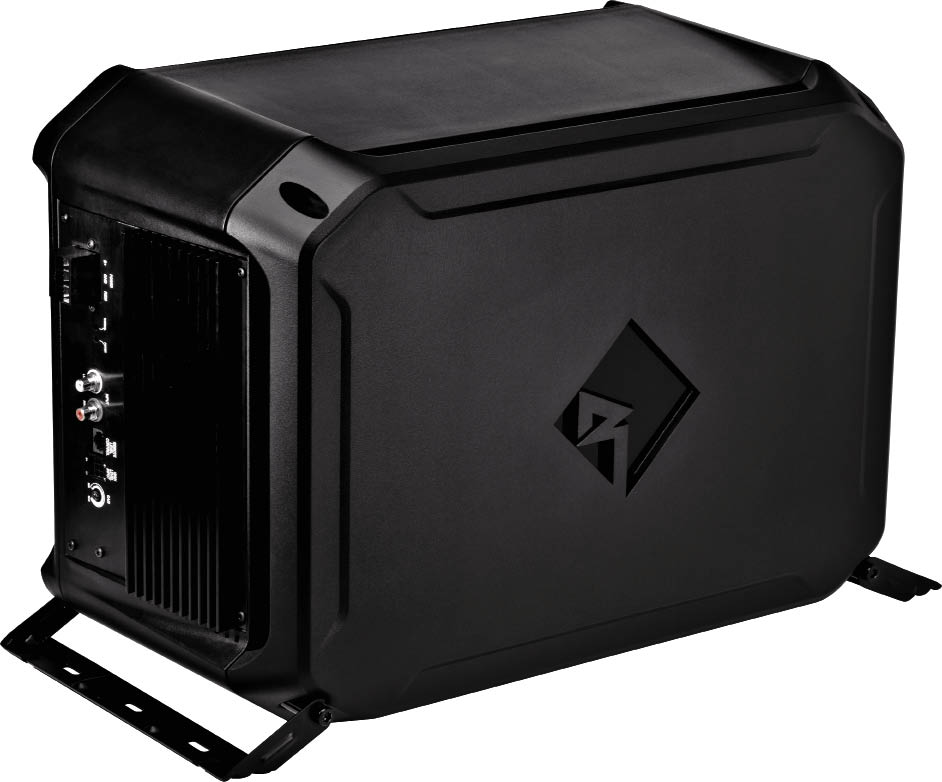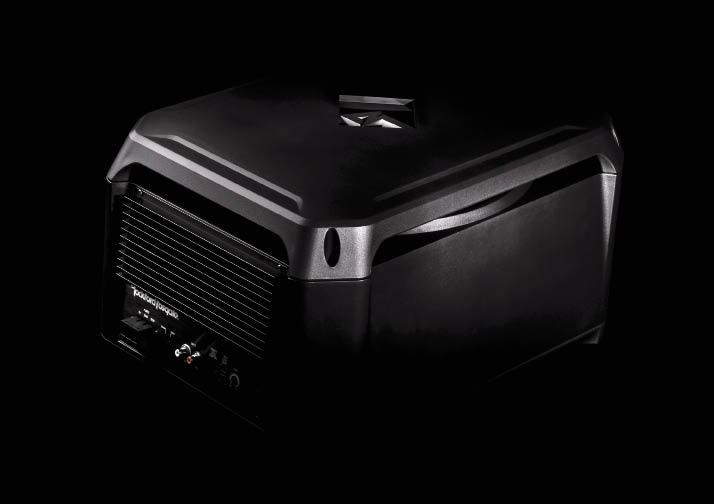 Once you have experienced true sub bass in a car, I can’t think of a single person who wouldn’t want to have it in their ride every day. Rich, deep bass that you can feel as much as hear, bass that enhances the musical experience and helps replicate the original event. This type of bass doesn’t have to be so loud that it vibrates parts off the car, it merely needs to be capable of keeping up with the levels of output from the rest of the system.
Once you have experienced true sub bass in a car, I can’t think of a single person who wouldn’t want to have it in their ride every day. Rich, deep bass that you can feel as much as hear, bass that enhances the musical experience and helps replicate the original event. This type of bass doesn’t have to be so loud that it vibrates parts off the car, it merely needs to be capable of keeping up with the levels of output from the rest of the system.
Many car audio enthusiasts and installers are intimidated by the variables involved in designing a truly good performing subwoofer system for a car. And truth be told, it does take a good deal of experience, knowledge, and technical ability. Or, you can leave all that to the pros, and simply by a plug and play subwoofer system, where all the guesswork has been done for you. And that’s precisely what the folks at Rockford Fosgate have done with their PS300-12 “Punch Overload” Powered Subwoofer System. I recently had a chance to test one of these solution driven products in the lab, and I came away quite impressed.
Design and Features
The Rockford Fosgate Punch Overload PS300-12 is a thoughtfully designed product, obviously from the minds of engineers who have some experience with automotive subwoofer systems. The product can be mounted in a variety of positions, and it’s designed to be easy to remove as well, with quick disconnect type connections for power and signal. And if you have ever had a woofer accidentally damaged because  you were too cheap to buy a grille for it, you’ll be happy to learn that the PS300-12 woofer is always protected from errant golf clubs, ski poles or hockey sticks by a “loading plate” that covers the entire woofer, and lets the sound exit around the enclosures perimeter. The self powered subwoofer system consists of a nice looking, and fairly small rectangular shaped enclosure, measuring 15-1/4” x 11-1/4” x 22-3/8”, and houses a special 2 ohm 12-inch Punch woofer and amplifier. The Rockford logos are designed into the top plate and bottom panel, making one or the other visible regardless of how you mount it. The system comes with all the brackets and hardware you need to get it securely fastened down, which is critical for safety.
you were too cheap to buy a grille for it, you’ll be happy to learn that the PS300-12 woofer is always protected from errant golf clubs, ski poles or hockey sticks by a “loading plate” that covers the entire woofer, and lets the sound exit around the enclosures perimeter. The self powered subwoofer system consists of a nice looking, and fairly small rectangular shaped enclosure, measuring 15-1/4” x 11-1/4” x 22-3/8”, and houses a special 2 ohm 12-inch Punch woofer and amplifier. The Rockford logos are designed into the top plate and bottom panel, making one or the other visible regardless of how you mount it. The system comes with all the brackets and hardware you need to get it securely fastened down, which is critical for safety.
The Punch amplifier is integrated into the end panel, and even its connections and controls have been simplified. There is a single plug for the power, ground, and remote trigger, then a pair of RCA’s or high level signal Molex inputs, an optional remote level control, and a gain knob. And that’s it. All of the crossover filter and subsonic filter settings are preset for you.
Enclosure
Of course the first thing I did when I unpacked the Overload system was take it apart. By unscrewing four large capscrews, I removed the top “loading plate” that is used in lieu of a grille, and then I removed the woofer. The enclosure itself has an internal volume of just over 1 cubic foot, and is manufactured from a material called “acrylonitrile butadiene styrene” or more commonly known as ABS. The interior of the enclosure is ribbed for both structural integrity as well as resonance reduction. To further reduce the possibility of cabinet resonances, the interior panels of the enclosure are covered with a high mass mat-type material that prevents resonances. On the “floor” of the enclosure is a slot type vent, which I tested to find that it “tunes” the air in the enclosure to resonate at 40Hz. The amplifiers mounting area is sealed off from the inside of the enclosure, and the amplifiers heatsink is mounted externally.
Woofer
The woofer is a design that is proprietary to the Overload system, using fairly non-traditional parts when compared to a typical Punch woofer. The most obvious difference is the 12” driver uses a paper cone and dust cap instead of the more common, (and some would say less natural sounding) poly cones. Because the woofer isn’t really meant to be seen, the cosmetic treatment is fairly limited, which is fine. A stamped steel basket supports the large motor assembly, and the build quality of the woofer is excellent, as one expects from a Rockford Fosgate woofer.
There are other differences from a typical Punch woofer as well, such as the non-vented backplate, and basic push on spade type terminals. But where it counts, the woofer of the PS300-12 system is all business, with a 2.5” voice coil wound on a black anodized aluminum former, a double stacked magnet structure, and tinsel leads that are stitched to the spider for greater reliability.
Amplifier
The amplifier section of the Overload system is rated at 300 watts into 2 ohms. The amp is a Class AB design, and is also a proprietary design specific to this application. As I was later to learn, the frequency response of the amp was designed specifically to work with the supplied woofer, in this specific cabinet. The amp uses a removable power connecting plug that accepts 8ga wire, and the RCA connectors are heavy duty looking panel mount types. Other than a gain control knob, there are no adjustments to be made, but you can purchase the optional PEQ remote control if you like to adjust things as you cruise.
Read on for Results
Related Articles
 Lexus unveils all-electric LFA Concept
Lexus unveils all-electric LFA Concept
 Toyota unwraps GR GT supercar and GR GT3 racer
Toyota unwraps GR GT supercar and GR GT3 racer
 S30.world Launches "The Masterpieces" - Celebrating Nissan's S30 Platform
S30.world Launches "The Masterpieces" - Celebrating Nissan's S30 Platform
 Lexus LFA successor on the way?
Lexus LFA successor on the way?
 Mazda RX-7 successor on the horizon
Mazda RX-7 successor on the horizon
 MID WHEELS by RAYS - 2025 Product Catalog Release
MID WHEELS by RAYS - 2025 Product Catalog Release




